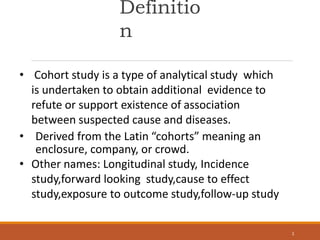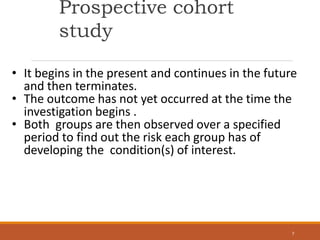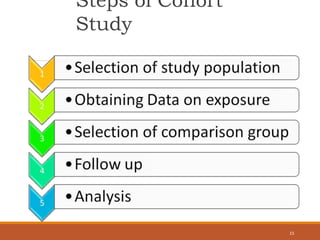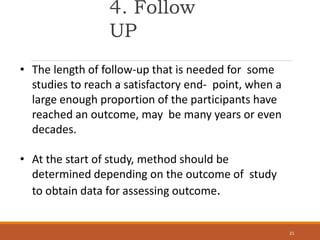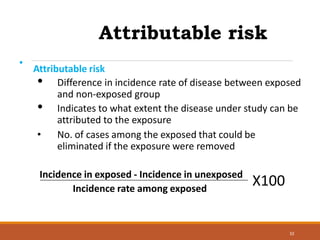A cohort study is a longitudinal study that follows groups of individuals who are alike in many ways but differ by a certain characteristic, such as exposure to a risk factor. The study monitors the groups for a specified period of time to determine if those exposed to the risk factor experience more of the outcome than the unexposed group. Key features include identifying cohorts prior to the outcome occurring and observing them over time from cause to effect. Cohort studies can be prospective, following groups forward in time, or retrospective, looking back at records to identify exposed and unexposed groups. They are useful for rare exposures and provide direct estimates of risk but require large sample sizes and long follow-up periods.
